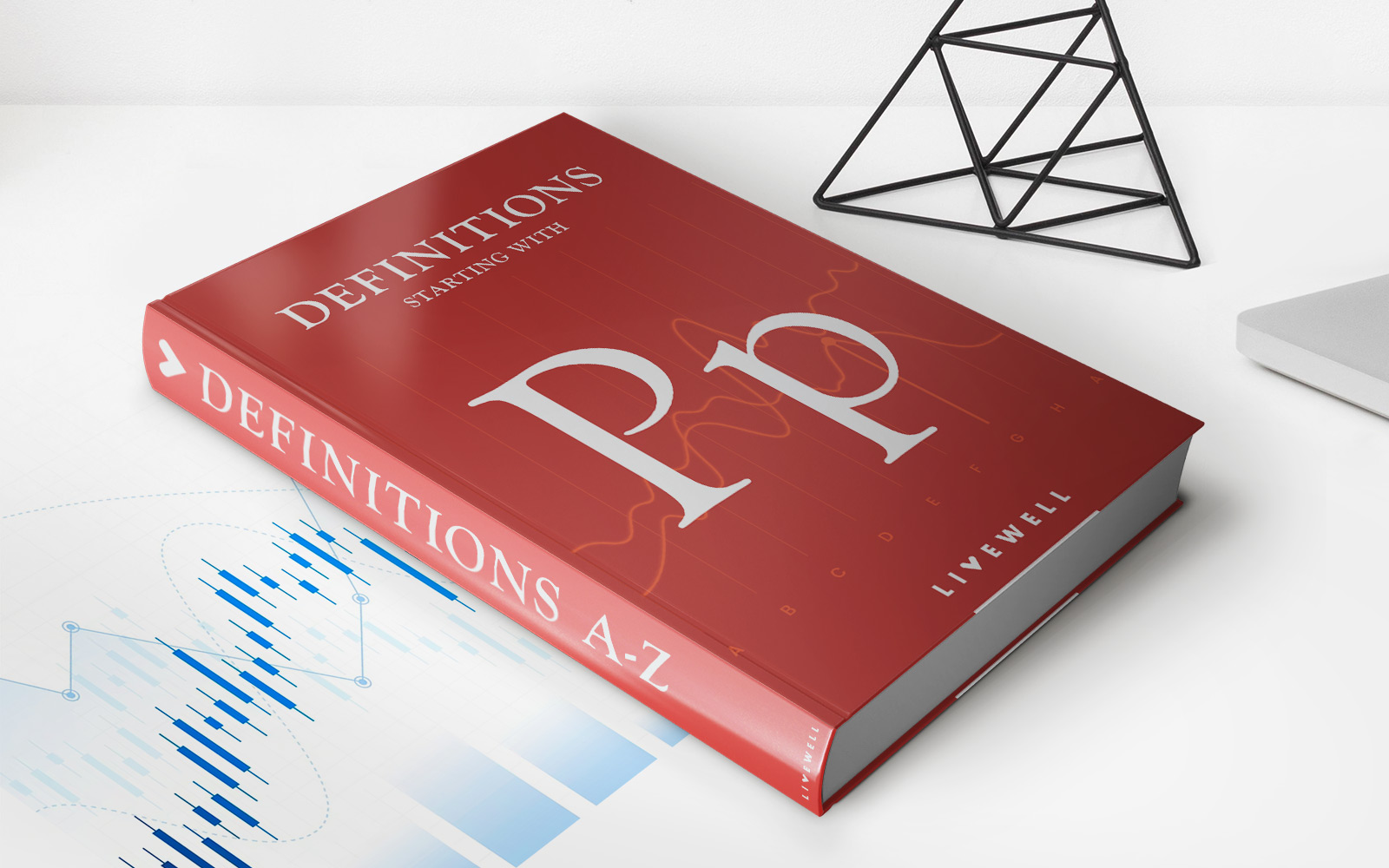

Finance
How Does Secondary Dental Insurance Work?
Modified: December 30, 2023
Learn how secondary dental insurance works to help you save on dental expenses. Find out how it can supplement your primary insurance coverage and manage your finances effectively.
(Many of the links in this article redirect to a specific reviewed product. Your purchase of these products through affiliate links helps to generate commission for LiveWell, at no extra cost. Learn more)
Table of Contents
Introduction
Dental insurance can provide valuable coverage for routine check-ups, cleanings, and necessary dental treatments. However, many individuals find that their primary dental insurance does not cover all the costs associated with dental procedures.
This is where secondary dental insurance comes in. Secondary dental insurance, also known as supplemental dental insurance, is designed to complement your primary dental insurance and help cover the gaps in your dental expenses. It can be a valuable addition to your dental insurance coverage, providing you with additional financial protection when you need it most.
In this article, we will explore the concept of secondary dental insurance, how it works, and how you can make the most of this type of coverage. Whether you already have primary dental insurance and are considering adding secondary coverage or you are evaluating your options for dental insurance, this article will provide you with the information you need to make an informed decision.
It’s important to note that secondary dental insurance is not meant to replace your primary dental insurance but rather to supplement it. It can help cover deductibles, co-pays, and services that may not be fully covered by your primary dental insurance.
Secondary dental insurance is particularly beneficial for individuals who anticipate needing extensive dental work or frequent dental visits. It can provide an extra layer of financial protection and help alleviate the burden of high out-of-pocket expenses.
Now that we have laid the groundwork, let’s dive into the details of how secondary dental insurance works and the benefits it can provide.
Understanding Secondary Dental Insurance
Before we delve into the intricacies of how secondary dental insurance works, let’s take a moment to understand the basics. Secondary dental insurance is a type of dental coverage that is activated when you already have primary dental insurance in place.
The primary dental insurance is your main coverage and will be billed first for any dental services you receive. Any costs that are not covered or only partially covered by your primary insurance may then be submitted to your secondary dental insurance for additional reimbursement.
Secondary dental insurance is meant to bridge the gap between what your primary dental insurance covers and the actual cost of your dental treatment. It can provide the peace of mind of knowing that you have an additional layer of financial protection in case unexpected or costly dental procedures arise.
It’s important to note that secondary dental insurance typically does not stand alone. In other words, you cannot purchase secondary dental insurance without having primary dental insurance in place. The purpose of secondary dental insurance is to complement and enhance your existing dental coverage.
Secondary dental insurance plans vary in terms of coverage and cost. Some plans may cover a percentage of the remaining expenses after your primary insurance pays, while others may cover specific procedures or services that are not covered by your primary insurance. It’s essential to thoroughly review the terms and conditions of any secondary dental insurance plan you are considering to ensure it aligns with your needs and budget.
Furthermore, it’s worth mentioning that secondary dental insurance does not automatically mean double coverage or double the benefits. Instead, it provides an extra layer of financial protection and can help reduce your out-of-pocket expenses.
Now that we have a basic understanding of secondary dental insurance let’s explore how it works in more detail to provide you with a clearer picture of its benefits and limitations.
How Secondary Dental Insurance Works
Secondary dental insurance operates as a supplemental coverage to your primary dental insurance. The process works as follows:
- Primary Insurance Coverage: The primary dental insurance is your main coverage and is billed first for any dental services you receive. It covers a portion of the costs according to the terms and limits of your plan.
- Submission of Claims: Once your primary dental insurance has paid its portion, you can submit the remaining expenses to your secondary dental insurance provider. This can typically be done electronically or through paper claims, depending on the insurance company.
- Reimbursement: The secondary dental insurance provider will review the claim and reimburse you for the eligible expenses based on the coverage and limits of your secondary plan. The amount reimbursed will depend on the specifics of your secondary dental insurance policy.
It’s important to note that there may be some limitations and exclusions when it comes to secondary dental insurance. Some plans may have waiting periods, pre-existing condition exclusions, or specific restrictions on which treatments or services are covered.
Additionally, secondary dental insurance may have annual or lifetime maximums. These are the maximum amounts that the insurance company will pay out for covered services during a specific time period or over your lifetime. It’s crucial to be aware of these limits to ensure you can maximize your coverage effectively.
Furthermore, secondary dental insurance is subject to coordination of benefits (COB) rules, which determine how multiple insurances will work together. COB ensures that the combined benefits from all insurance plans do not exceed the total cost of treatment. It prevents overpayments and potential insurance fraud.
Coordination of benefits requires you to provide details about your primary dental insurance, including the insurance company name, policy number, and the primary policyholder’s information. Your secondary dental insurance provider will then coordinate with your primary insurance company to determine the appropriate coverage and reimbursement amounts.
Understanding how secondary dental insurance works is crucial to ensure you are fully aware of the potential benefits and limitations. Now that we have explored the functioning of secondary dental insurance, let’s delve into the key factors to consider when choosing a secondary dental insurance plan.
Coordination of Benefits (COB)
Coordination of Benefits (COB) is a crucial aspect of secondary dental insurance. COB rules are in place to ensure fair and accurate claims processing when multiple insurance plans are involved.
When you have both primary and secondary dental insurance, COB determines how the two insurance companies coordinate to avoid overpayment and ensure that the combined benefits do not exceed the total cost of treatment. Here’s how COB works:
- Primary Insurance Determination: The primary insurance is determined based on specific rules and guidelines set by the insurance companies. Typically, the primary insurance is determined by the birthday rule, which states that the primary insurance is the plan of the policyholder whose birthday comes first in the calendar year.
- Primary Insurance Payment: Once the primary insurance has been determined, it will be billed first for any dental services. The primary insurance will pay according to its coverage and limitations, leaving any remaining costs that are not covered or only partially covered.
- Secondary Insurance Submission: After the primary insurance has paid its portion, the remaining expenses will be submitted to the secondary dental insurance. The secondary insurance provider will review the claim and reimburse you for the eligible expenses based on the coverage and limits of your secondary plan.
- COB Calculation: The secondary insurance company will calculate the amount they will reimburse you based on the remaining expenses after the primary insurance payment. The total reimbursement from the primary and secondary insurance should not exceed the total cost of the dental treatment.
It’s important to provide accurate information about your primary dental insurance when submitting claims to your secondary insurance. This includes the insurance company’s name, policy number, and the primary policyholder’s information.
COB rules also apply in cases where both you and your spouse have dental insurance coverage. In such cases, the primary dental insurance will be determined based on the birthday rule for you and your spouse. This ensures a fair and consistent approach to determining primary and secondary coverage.
It’s essential to understand the COB rules of your primary and secondary dental insurance plans to ensure smooth claims processing and avoid potential issues. Be sure to review the specific coordination of benefits guidelines provided by your insurance companies and seek clarification if you have any questions.
Now that we have covered the coordination of benefits aspect of secondary dental insurance, let’s move on to the next important step, which is choosing the right secondary dental insurance plan.
Choosing Secondary Dental Insurance
When it comes to choosing secondary dental insurance, it’s important to consider several factors to ensure you select the right plan for your needs. Here are some key considerations to keep in mind:
- Review Your Primary Dental Insurance Coverage: Before selecting a secondary dental insurance plan, thoroughly review your primary dental insurance coverage. Understand its limitations, exclusions, and any gaps in coverage that you would like to address with secondary insurance. This will help you identify the areas where additional coverage is needed.
- Assess Your Dental Needs: Consider your dental needs and anticipate any future treatments or procedures. If you require extensive dental work or expect frequent visits to the dentist, a secondary insurance plan with comprehensive coverage may be a better fit. On the other hand, if you only require basic preventive care, a plan with lower premiums and limited coverage may be sufficient.
- Compare Plan Options: Research and compare different secondary dental insurance plans. Look for plans that provide the coverage you need at a cost that fits your budget. Pay close attention to the coverage limits, waiting periods, pre-existing condition exclusions, and the network of dentists and specialists included in the plan.
- Consider Cost and Affordability: Evaluate the costs associated with the secondary dental insurance plan, including the premiums, deductibles, co-pays, and any additional fees. Calculate how much the plan will cost you annually and compare it to the potential benefits you will receive. Make sure the plan is affordable and offers good value for the coverage provided.
- Read Reviews and Seek Recommendations: Read reviews and seek recommendations from friends, family, or dental professionals who have experience with secondary dental insurance plans. Their insights can provide valuable guidance and help you make an informed decision.
- Consult with Insurance Professionals: If you are uncertain about which secondary dental insurance plan to choose, consider consulting with insurance professionals. They can help assess your needs, explain the available options, and guide you towards a plan that best suits your dental insurance requirements.
By thoroughly evaluating your dental needs, comparing plan options, and considering the cost and affordability, you can make an informed decision when selecting secondary dental insurance. Keep in mind that the right plan for you may depend on your unique circumstances, budget, and dental care needs.
Next, we will explore the pros and cons of secondary dental insurance to give you a comprehensive understanding of its benefits and limitations.
Pros and Cons of Secondary Dental Insurance
Secondary dental insurance offers several advantages and disadvantages to consider when deciding whether to add this type of coverage to your dental insurance plan. Let’s explore the pros and cons:
Pros:
- Additional Coverage: Secondary dental insurance provides an extra layer of coverage for dental expenses that may not be fully covered by your primary insurance. It can help reduce out-of-pocket costs and provide financial protection for unexpected or costly dental procedures.
- Complementary Coverage: Secondary dental insurance is designed to complement your primary insurance, filling in the gaps and enhancing your overall dental coverage. It can help cover deductibles, co-pays, and services that may not be covered by your primary insurance.
- Flexibility and Choice: With secondary dental insurance, you have the flexibility to choose a plan that aligns with your specific dental needs. You can select a plan that offers the desired coverage and benefits, allowing you to tailor your insurance to your unique circumstances.
- Peace of Mind: Secondary dental insurance can provide peace of mind knowing that you have an additional layer of financial protection for your dental expenses. It can alleviate concerns about high out-of-pocket costs and unexpected dental treatments.
Cons:
- Added Cost: Adding secondary dental insurance means an additional cost on top of your primary dental insurance premiums. Depending on the plan you choose, the cost of secondary insurance may outweigh the benefits it provides, particularly if you don’t anticipate needing extensive dental work.
- Coverage Limitations: Secondary dental insurance plans may have coverage limitations, waiting periods, and exclusions. Certain procedures or services may not be covered, or there may be coverage caps or restrictions on specific treatments. It’s essential to carefully review the terms and conditions of the plan before enrolling.
- Coordination Complexity: Coordinating benefits between primary and secondary dental insurance can be complex and time-consuming. It requires submitting claims and providing information about your primary insurance, which may involve additional paperwork and coordination with multiple insurance companies.
- No Double Benefits: It’s important to note that having secondary dental insurance does not automatically mean double the benefits. The secondary insurance will only cover the remaining expenses after the primary insurance has paid its portion, limiting the additional coverage you receive.
Considering the pros and cons of secondary dental insurance will help you weigh the benefits and limitations. It’s crucial to assess your dental needs, evaluate the costs, and carefully review the terms of the secondary insurance plan to determine if it aligns with your budget and expected dental care requirements.
Now, let’s explore some tips to maximize your secondary dental insurance benefits and get the most out of your coverage.
Tips for Maximizing Secondary Dental Insurance Benefits
Maximizing your secondary dental insurance benefits can help you make the most of your coverage and minimize out-of-pocket expenses. Here are some helpful tips to consider:
- Understand Your Benefits: Familiarize yourself with the details of your secondary dental insurance plan. Understand the coverage limits, procedures covered, and any waiting periods or exclusions. This knowledge will allow you to plan and utilize your benefits effectively.
- Coordinate with Your Primary Insurance: Ensure that your primary and secondary dental insurance companies are coordinating benefits correctly. Provide accurate information about your primary insurance when submitting claims to avoid delays and potential issues.
- Optimize Your Usage: Schedule preventive dental care appointments regularly to take advantage of covered services, such as cleanings and check-ups. Preventive care can help you maintain good oral health and catch any potential issues early, reducing the need for more extensive and costly treatments.
- Budget for Out-of-Pocket Expenses: While secondary dental insurance can help reduce costs, it’s important to budget for any out-of-pocket expenses that may still arise. Plan and save accordingly to be prepared for deductibles, co-pays, or costs that may not be covered by your insurance.
- Consider Network Dentists: Check if your secondary dental insurance plan has a network of preferred dentists and specialists. Choosing providers within the network can often result in greater coverage and lower out-of-pocket expenses.
- Opt for Filing Electronically: If possible, consider filing your secondary dental insurance claims electronically. Electronic filing is often faster and more efficient, reducing the chances of errors or delays in processing your claims.
- Keep Documentation: Keep copies of all dental invoices, explanations of benefits (EOB), and any communication with the insurance companies. Having proper documentation can help resolve any issues or disputes that may arise, ensuring you receive the maximum benefits you are entitled to.
- Regularly Review Your Coverage: Periodically review your secondary dental insurance coverage to ensure it still meets your needs. If your dental needs change, consider adjusting your coverage or exploring different plans that better align with your current situation.
By implementing these tips, you can optimize your secondary dental insurance benefits and make the most of your coverage. Remember to stay proactive and informed about your insurance plan to effectively utilize the benefits available to you.
As we conclude this article, it’s important to recognize that secondary dental insurance can provide valuable financial protection and peace of mind for your dental needs. However, it’s crucial to assess your unique circumstances, dental requirements, and budget before deciding whether to add secondary dental insurance to your coverage.
With the right knowledge and considerations, you can make an informed decision that aligns with your needs and helps ensure proper dental care without unnecessary financial burdens.
Conclusion
Secondary dental insurance serves as a valuable complement to primary dental insurance, providing coverage for dental expenses that may not be fully covered by your primary plan. It helps bridge the gaps in coverage, reduces out-of-pocket costs, and provides additional financial protection for unexpected or costly dental treatments.
Understanding how secondary dental insurance works, including the coordination of benefits (COB) process, is essential in maximizing its benefits. By coordinating with your primary insurance and carefully submitting claims, you can ensure a smooth and efficient reimbursement process.
When choosing secondary dental insurance, consider factors such as your dental needs, coverage limitations, costs, and provider networks. Thoroughly reviewing plan options and consulting with insurance professionals can help you make an informed decision based on your unique circumstances.
Secondary dental insurance has its pros and cons, and it’s crucial to evaluate them against your specific dental care requirements. While it offers additional coverage, it comes at an additional cost and has limitations that should be considered. By understanding the benefits and limitations, you can make an informed decision about whether it is the right choice for you.
Finally, to maximize your secondary dental insurance benefits, familiarize yourself with your plan’s details, schedule regular preventive care appointments, and budget for potential out-of-pocket expenses. Opting for network dentists, filing claims electronically, and maintaining proper documentation can also help you optimize your coverage.
Remember, secondary dental insurance is designed to enhance your existing dental coverage and provide peace of mind. By carefully considering your options and understanding the terms of the plan, you can make the most of your dental insurance and ensure proper oral healthcare without unnecessary financial burdens.
Ultimately, the decision to obtain secondary dental insurance should be based on your individual circumstances and dental needs. Consider your budget, anticipated dental treatments, and risk tolerance when evaluating the need for additional coverage.
By taking the necessary steps to educate yourself and choose the right secondary dental insurance plan, you can have the confidence and peace of mind knowing that you have an added layer of financial protection for your dental care needs.














